Why Do Kettlebells Hurt My Traps/Trapezius? (A Few Reasons Why)
This is something which can cause major problems, to new users and regular users alike.
However, with a little tweaking and a few pointers, it can make all the difference.
There are a number of reasons why kettlebells hurt your traps, let’s have a look at some of the reasons why.
Why Do Kettlebells Hurt My Traps/Trapezius?
Kettlebells hurt your traps for a number of reasons, the main one would be down to the fact you are too tense when using the equipment. This happens more often with people that are new to kettlebells and have an issue with their form. Tension is an automatic response in all of us, especially when doing a new form of strenuous exercise, such as kettlebells. If the kettlebell you are using is too heavy or maybe the sheer volume of training at one time is too great, that may result with tension in and around the trapezius area, which lies between the back of the neck and shoulders.
The Trapezius Muscle
The trapezius is a muscle that starts at the base of your neck, goes across your shoulders and extends to the middle of your back.
The trapezius (traps muscle) helps you move your head, neck, arms, shoulders and torso.
It also stabilises your spine and helps with posture.
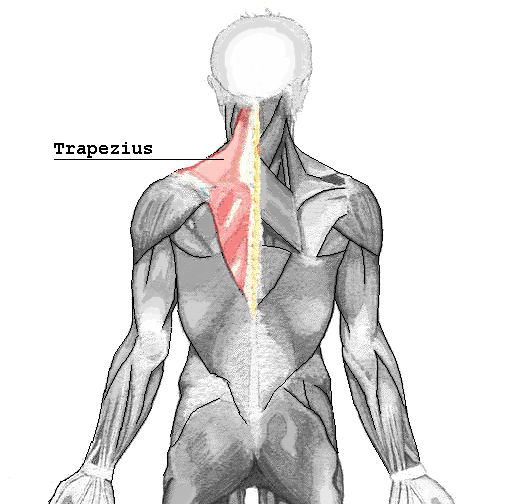
Back To Basics
If you are getting pain around the trapezius area, then the most likely reason would be purely down to your posture and form when exercising with a kettlebell.
For the majority of people, kettlebells don’t cause any issues. For others, all they need are a little adjustment here and there to iron out any issues they are having.
The trapezius is the muscle that enables you to shrug and you may be shrugging in places where you shouldn’t be, or on just one side.
When training with new equipment its natural for the body to take time to adjust to it.
Listen to your body. If it hurts when you do a certain exercise, stop doing it.
Pain is your body telling yourself there is something wrong. If you don’t want to stop doing it, consult a trainer and let them check your form for errors. Just remember there are plenty of other exercise’s out there that you can do, without risking an injury.
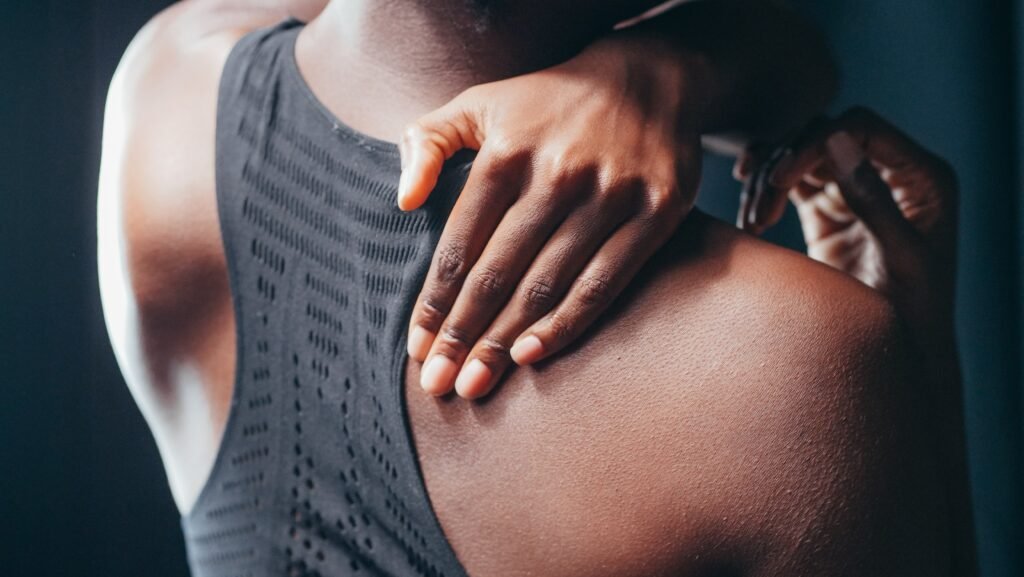
As kettlebells require many compound movements, you must remember that a large number of muscle groups are being used at once.
If your arms are tense and not relaxed and ready to go, the kettlebell may pull/jerk you harder forward than its needs to go.
Which in turn can pull hard on your scapular, so you need to make sure you keep you shoulders packed (sucked in to the sockets, down and back like you are deadlifting) and thrust from the hips.
If you are doings swings, remember to spread your toes, drive your heels into the ground and pack your shoulders.
If you have pain in and around the trapezius area, you are using the upper part of your body too much in relation to the kettlebell movement as a whole.
the explosion in a kettlebell swing should come from thrusting the hips as the bell is swinging back up in a pendulum motion and not be pulled up with your arms.
Pulling more with your arms will put much more stress and emphasis on your upper back, traps (trapezius) and neck.
Obviously form comes over time and it won’t happen over night, but be mindful of this when exercising and look to correct yourself if possible or even see a qualified kettlebell instructor if you don’t feel like you are making progress.
What Exercise Is Causing The Problem?
Are you doing American, Russian, one arm or hand to hand swings?
Russian would be more preferable if you have issues with your traps. Keep your shoulders down, engage your lats, don’t shrug. Hinge at the waist, don’t squat. As the Russian swing only brings the kettlebell to shoulder height and not above your head as is with the American variant.
lf you are doing a renegade row or upright row to work your back, this exercise has an extremely high probability of shoulder impingement. This can wear on the tendon or ligament, which is much slower to heal than muscle.
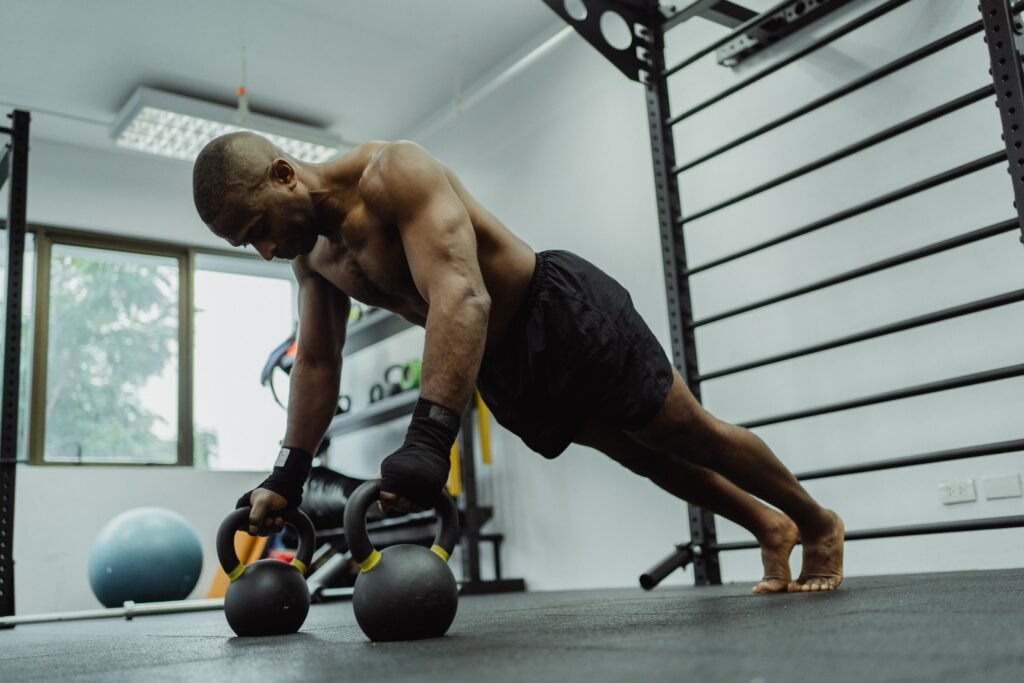
Make sure you’re really tightening your abs and glutes at the top of the swing. Practice by doing some tight planks (including shoulder blades screwed back and down) just before jumping up for some swings. Replicate that tightness at the top of each swing.
If every time you perform a swing or other exercise and the next day you’re traps are very sore, specifically on top of the shoulder blades and causes elbows and fingers to feel numb, there could be a lot of reasons why – trigger points, supraspinatus issues etc.
If you’re experiencing any kind of numbness, then seek the advice of a medical professional as soon as possible.
Tip – at the top of the swing, try to break the kettlebell handle in half with your hands. This will help rotate your shoulders down and back and get you out of your traps.
DOMS – Good & Bad
You would have all been exercising enough by now to know what DOMS are? If you don’t, allow me to enlighten you.
Sore muscles after moderate physical activity, known as delayed onset muscle soreness (DOMS) can occur when you start a new exercise programme, change your exercise routine, or increase the duration or intensity of your regular workout. Does any of these ring any bells with your recent workout schedule?
When muscles are required to work harder than they’re used to or in a different way, it’s believed to cause microscopic damage to the muscle fibres, resulting in muscle soreness or stiffness.
DOMS is often mistakenly believed to be caused by a build up of lactic acid, but lactic acid is not involved in this process.
Anyone can develop DOMS, even those who have been working out for years, which also includes elite athletes.
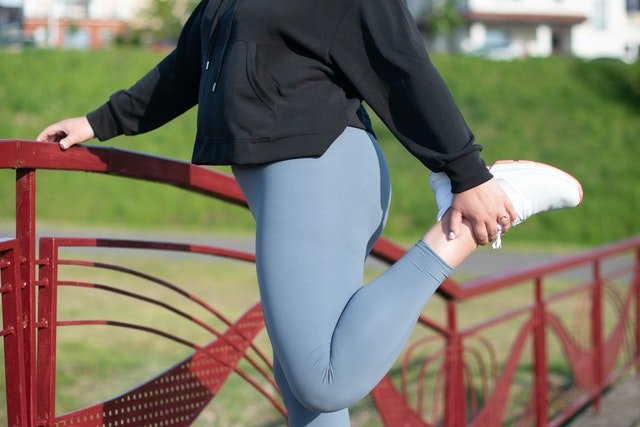
It can be disconcerting for people who are new to exercising and may affect their initial enthusiasm to get fit.
The good news is the soreness will decrease as your muscles get used to the new physical demands being placed upon them.
The soreness is part of an adaptation process that leads to greater stamina and strength as the muscles recover and build.
DOMS normally last between 3 to 5 days. The pain, which can range from mild to severe, usually occurs 1 or 2 days after the exercise and can really prohibit movement when they occur.
This sort of muscle pain should not be confused with any kind of pain you might experience during exercise, such as the acute, sudden and sharp pain of an injury, such as muscle strains or sprains.
There’s no one simple way to treat DOMS. Nothing is proven to be completely effective.
The below may help ease some of the symptoms:
- rest
- ice packs
- painkillers
- massage
Weight & Volume
If you are training with a kettlebell that is too heavy for you, this can cause you to have pain in the trap area, as you may be struggling to lift or swing the bell past waist height, causing you to activate your trapezius more than you should.
Same applies if you are working out too much at one time. The volume of training you are doing may cause you to have sloppy form, which may ultimately cause you to over use muscles that shouldn’t be used as much as they are.
If you have ever had any previous injuries in the area in question? This can also count for problems in the traps if you have suffered with trapezius problems in the past or you are coming back too soon from a slight problem.
Another reason might be down to the fact you have muscles around the trap area which are over compensating for the fact that you have a weak or damaged muscle around the neck, shoulder or upper back area.
Which will result in other muscle groups working harder to compensate the problematic areas.
Taking the time to do some stretches before you workout would be recommended, as well as getting a sports massage to loosen the tight tissue and help some of the tension in the area.
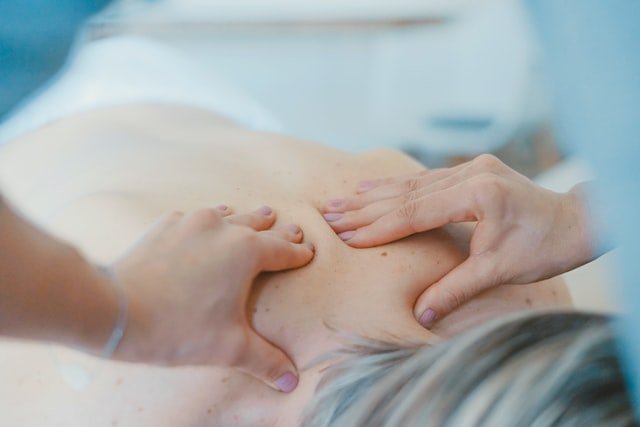
Final Thoughts…
If you enjoyed this, then please check out the YouTube channel, with over 50 workouts which include the use of kettlebells, resistance bands, dumbbells and even body weight exercises too.
Don’t forget, I will be adding more workouts weekly to help you stay fit and healthy at home with just the use of a kettlebell.
With workouts of all types, for all fitness levels. You know that we have you covered, so stay tuned for more.
If you enjoy sport and use CBD to help with your recovery in between gruelling workouts, then your are in the right place. Here at Sport CBDs, we train hard and recover the best way possible…
We have regular workouts (check out the YouTube channel), CBD news and CBD products to help you gain that edge!
If you wanted to check out the reputable CBD we have on offer here at the site, then please head to the Sport CBDs Store. We also do fitness clothing and yoga accessories too.
Untill next time, all the best…


